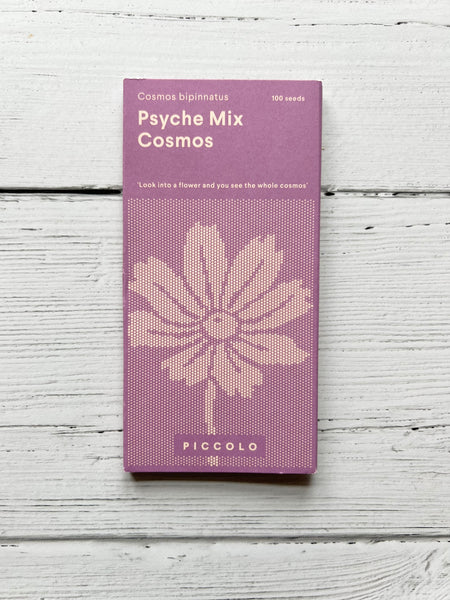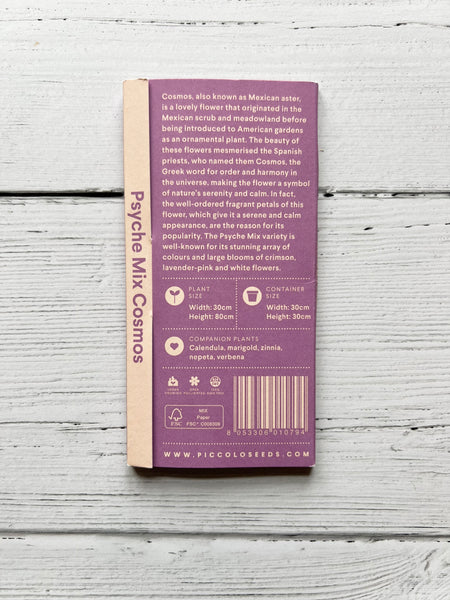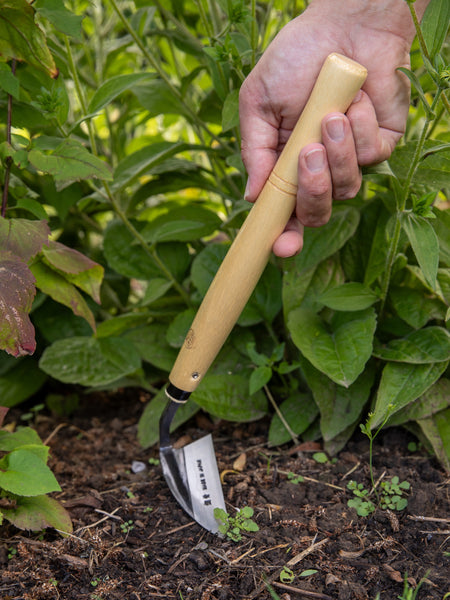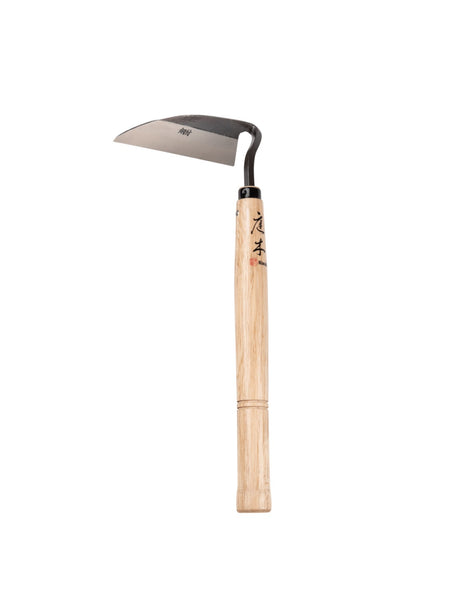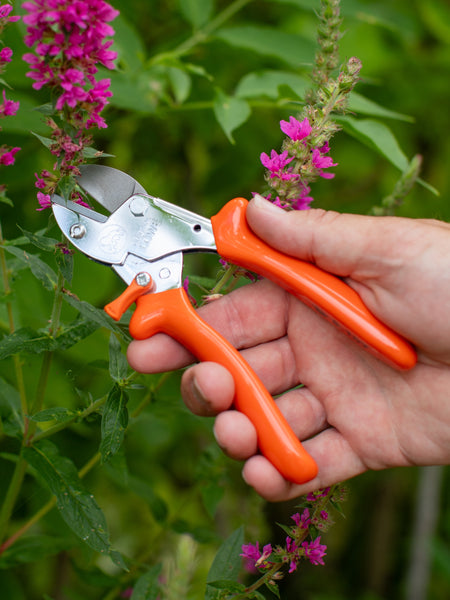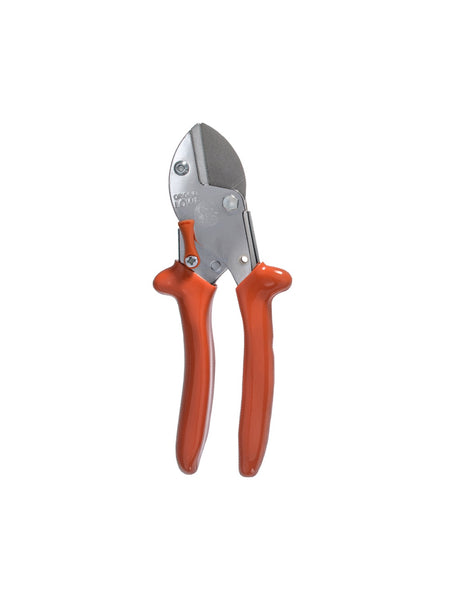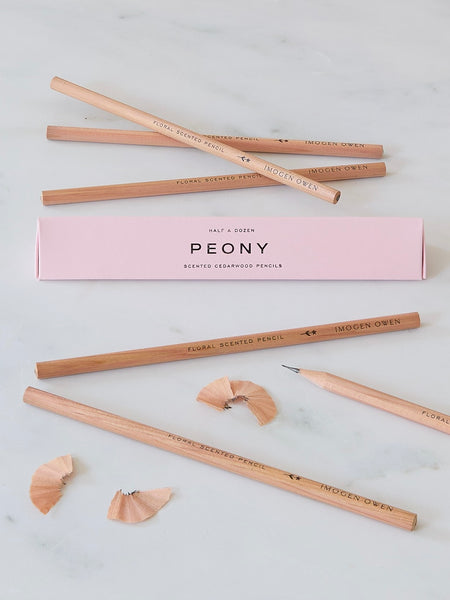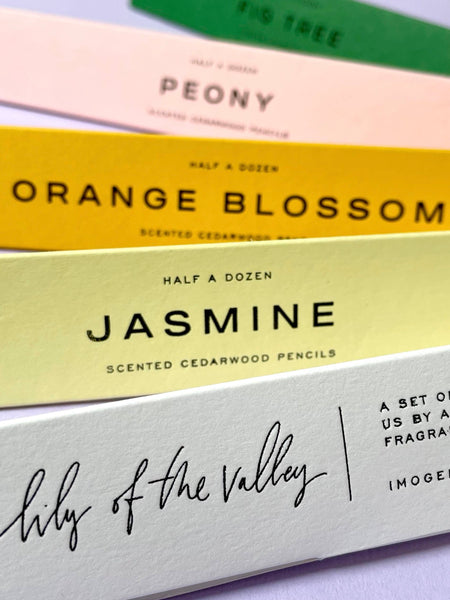Would it be fair to say that June is the most quintessentially English month? I think so. June is when our world-famous cottage gardens look their most ebullient, brimming with cornflowers, hollyhocks, lupins, delphiniums, peonies, irises and, of course, roses. June is romantic, sensuous and filled with excitement and promise.
The youthful vigour of spring lingers on in June’s lush foliage and vigorous growth, spangled now with flowers in shades of white, pink, mauve, purple, cream and peach. Hotter colours tend to peak a little later, and so for now we’re immersed in a world of blue skies, saturated greens and soft, pastel shades. Having tiptoed through May’s tulips, now’s the time to dust off your parasol and languish among the lavender, gather armfuls of fragrant, blousy flowers and savour the season’s first tender fruit. Step outside, delight in the moment and take some time to revel in the first signs of summer before starting on your to-do list.
Except in the far north of the country, the danger of frost has now passed. All tender plants - tomatoes, dahlias, summer bedding and exotics such as bananas and cannas - can safely be planted out after a period of hardening off. This step remains critical to ensure plants become accustomed not only to the outside temperature but also to light levels and wind exposure. Some houseplants can be given a summer holiday in a sheltered spot outside, but do heed the advice below before packing them off for their annual vacation.

It’s not too late to sow seeds of many annuals and vegetables. The days are now at their longest, giving plants almost 18 hours to photosynthesise and grow. Flower seeds sown in early June could be in bloom by the time the summer holidays begin and will continue for 3-4 months beyond that. Some gardeners, myself included, swear by sowing a batch of annuals on or around midsummer’s day to plug gaps in borders left by early bloomers such as alliums and Dutch irises. They’ll also keep the house filled with cut flowers until November. Give this a try, especially if you have space in your greenhouse or a patch of empty ground to spare.
With pots and containers romping away and young plants trying to establish themselves in the ground, watering becomes a regular task and a daily one if the weather is fine for long periods. If you’re going to water, do it thoroughly or not at all. Don’t sprinkle the surface politely and imagine that will do the trick - you could be doing more harm than good. Water using a can without a rose attached if you’ve got the time and energy - otherwise use a hose pipe. This way you can direct water to the base of each plant and give it a proper drink. I give a small tree a full 2 gallon (9 litre) can of water each time I water and a large clump of perennials, a dahlia or a chrysanthemum around a gallon (4.5litres). The objective of watering well, in addition to quenching a plant’s thirst, is to encourage it to send its roots down deep into the soil in order that it can sustain itself and reduce the watering burden later on in the summer. If you water only a tiny amount, plants will concentrate their roots in the surface layer of the soil where they will dry out quickly and need constant watering. By creating a shallow depression in the ground around your plants when planting, you will help to prevent water from running away and keep it where it’s needed.

The intensity and immediacy of gardening tasks certainly start to dissipate this month, tipping the balance from ‘doing’ to ‘enjoying’. If you can bear to leave your own patch for a short while, there are thousands of outstanding gardens to visit in June. I try to explore at least one a month, although even that can be a struggle. Please make the time, as the inspiration and ideas a good garden visit will provide cannot be equalled by any book, magazine or Internet search. And don’t just rush around taking photographs as I am prone to do - leave time to find a bench or viewing point, drink in your surroundings for while and make copious notes when you’re satiated.
Five Beautiful Gardens to visit in June
Sissinghurst Castle, Kent - this world-famous garden needs little introduction. It is particularly special in June as the roses, irises and famous White Garden come into their own. If you’ve been before, a return visit is never a disappointment. You can find posts I’ve written about Sissinghurst here.
Haddon Hall, Derbyshire - billed as ‘The most perfect house to survive from the middle ages’, Haddon Hall’s ancient walls are wreathed in perfumed roses. The magnificent Elizabethan walled gardens, originally designed by the celebrated architect Robert Smythson, were recently redesigned by Arne Maynard.
Easton Walled Gardens, Lincolnshire - An exceptional garden restoration project famed for its sweet peas, ‘pickery’ (cutting garden) and rose meadows wrapped in the embrace of beautiful walled gardens. The sweet pea season officially begins on 21st June 2023.
Mottisfont Abbey, Hampshire - the walled garden at Mottisfont is home to the National Collection of pre-1900 old-fashioned roses. Unlike modern varieties, old-fashioned roses tend to flower only once a year, so you must visit in early summer to enjoy them. You can read a short blog post I wrote about the gardens here.
Drum Castle, Aberdeenshire - one of the most stunning Scottish gardens, surrounded by a fabulous landscape. Its renowned Garden of Historic Roses boasting 400 varieties can be enjoyed at its best throughout June and July.

In the meantime, here’s how to get the most out of your garden this month:
June at a Glance
Plan - spring bulb displays for autumn planting, succession planting for late summer colour and cropping, someone to water your garden if you’re planning a holiday in July or August.
Sow - annual flowers for an extended season of colour, salads for summer, vegetables for autumn cropping, all the autumn and winter-picking brassicas and biennial flowers to bloom next spring.
Plant - container-grown shrubs, roses, perennials and climbers. Summer bedding and dahlias. Plant up containers of all shapes and sizes.
Prune - early spring flowering shrubs, taking care not to disturb nesting birds.
Harvest - asparagus, broad beans, carrots, cauliflower, lettuce, mint, parsley, radish, rhubarb, spinach, spring cabbage, spring onion, strawberries, gooseberries and elderflowers.
Pick - peonies, roses, delphiniums, lupins, alstroemeria, sweet peas, lavender.
Buy - plants that fill the ‘June gap’, young vegetable plants, bedding plants, peat-free compost for containers, tomato and lawn food, liquid seaweed and weeding tools. It might also be time to invest in a new hose or watering can.
Enjoy - early mornings and long, light evenings, increasing temperatures, strawberries and gooseberries eaten straight from the plant.
Visit - open gardens and nurseries across the country, but especially those specialising in roses.
Indoors
Much of May’s advice still stands. Here’s a quick checklist to make sure you’re on the right track:
- Check plants positioned on bright, sunny windowsills to ensure their foliage is not scorching. Move them away if you see leaves starting to turn brown and crispy.
- Pot up rooted cuttings taken in May and take more if you have homes for the resulting plants. Baby houseplants make great dinner party or housewarming gifts.
- Continue feeding once a week with a good quality houseplant fertiliser.
- Water each time the surface of the compost feels dry to the touch. Some popular houseplants, including azaleas, orchids, air plants and carnivorous plants, must be watered using rainwater as tap water is too alkaline for them.
- Move houseplants into a larger container as soon as you notice the compost is packed with roots or you spot mats of fine roots emerging from the base of the pot.
- Watch out for pests and diseases that can develop rapidly during warm weather. Deal with them promptly and without using chemicals if you possibly can.
Give your houseplants a summer holiday. Many types will enjoy a period outside during the summer but there are a few important things to note first:
- Indoor temperatures tend to be steady and relatively warm, so wait until night time temperatures outside are consistently between 10ºC and 14ºC before packing plants off on their break.
- Follow the same procedure as you would for hardening off annuals so that your houseplants become slowly accustomed to life outdoors. A big shock could cause them to stop growing temporarily, drop their leaves or even die.
- Light levels are likely to be very much higher outside so choose a sheltered, lightly shaded spot and check on your plants regularly to make sure they’re not being munched by slugs or snails.
- Water and feed as normal - be careful not to forget about them! Take plants out of planters as these could fill up with water on rainy days, suffocating the roots.

Potting Shed & Greenhouse
- If you are growing tomatoes, cucumbers or aubergines in a greenhouse, water regularly as the weather starts to warm up. Regularity is important as erratic watering can cause leaf drop, fruit rot, fruit splitting, loss of disease resistance and reduced production. A high potassium feed given every week will help the fruit to develop well and improve their flavour. Tie stems securely to canes, or whatever support system you have chosen, as the plants will become heavier as the fruit begins to develop.
- Big temperature fluctuations are a greenhouse gardener’s enemy. Be sure to open the doors and windows on warm days to keep the air cool. Put up shading to diffuse bright sunlight and guard against scorching. ‘Damp down’ (sprinkle) paths with water 2 or 3 times during the day to cool the air and increase humidity.
- Powdery mildew can spread very quickly in warm, slightly shaded and poorly ventilated greenhouses, so keep the air moving through.
- As plants are moved outside, clean and tidy as you go. Use any empty staging to display sun-loving plants such as pelargoniums and chillies. We are even experimenting with growing a lotus in a large half barrel.
- Pests can take control within days if left unchecked. Inspect plants regularly, concentrating on shoot tips and the underside of leaves. Because my greenhouse is small I tend to squish any pests that I find or I wipe them away with a cloth that has a little bit of washing-up liquid on it. If you’re serious about pest control, you can work with biological controls that have no adverse impact on our environment.
Terrace & Balcony
- Remove spent bulbs from pots to free them up for summer displays. It’s up to you whether you keep the bulbs for another year or start again with fresh ones in the autumn. The decision will depend on how much space you have, your budget and whether you’re patient or risk-averse. If you don’t like to waste anything, there’s little to lose by planting bulbs out in a quiet corner of the garden and seeing what happens next year.
- Plant vacant containers with summer flowers, foliage plants and ornamental vegetables. The sky is the limit when it comes to the combinations you choose - try planting a pot with foliage-only plants, or sticking to a particular colour theme. There are very few rules and you should have as much fun with it as possible. Whether you go kitsch, chic, bright, moody, tall or overflowing it’s up to you. For a few tips and planting ideas, read my blog post Summer Containers - Four Recipes For Success.
- Continue tying in climbing plants such as wisteria, honeysuckle, passionflower, cobaea and clematis. Do this regularly to stop them from flopping about and growing in the wrong direction. Once they’ve tangled themselves up in their host support, adjusting them is like unpicking knitting.
Flower Garden
June is a busy month in the flower garden. Early summer signals the time to start thinking about the following year.
- It’s safe to lift clumps of tulips, and daffodils as soon as the foliage has completely died down. The bulbs can either be dried and stored until autumn or divided and replanted immediately where you want them to grow next year. Plant them deeply so that they won’t be disturbed in the meantime. Discard very small bulbs unless you have the time and patience to let them grow to flowering size, which may take 2-3 years.
- Now is the time to sow spring-flowering biennials such as wallflowers, stocks, violas and honesty. They will do their growing this year and be ready to flower early next year. Sow outside in drills and thin them to 20-30cm apart in July so that they become strong and bushy. They can be lifted and moved into their final positions in autumn.
- The ‘June gap’ is a period between late spring and early summer when there’s a relative lack of nectar and pollen available for pollinators. It occurs as spring flowers such as hawthorn and oilseed rape decline but before summer flowers peak. This is a particular problem for beekeepers in rural areas where there are fewer introduced plants to bridge the gap and keep their hives well fed. By filling our gardens and allotments with flowering plants such as catmint (nepeta), hardy geranium, campanula, thyme, sage, lavender, valerian, centaurea (knapweed), osteospermum and echium, we can help boost the number of flowers from which bees and other pollinators can forage in June.
- Tie in climbing and rambling roses as they produce new growth. Coax and secure stems so that they are horizontal or arching gently downwards: this will encourage them to produce plenty of flower-bearing side shoots.
- Plant out summer bedding and tender annuals. If a dry spell follows, continue watering until the plants are nicely settled in. Pinch out the growing tips of taller annuals such as cosmos, marigold and snapdragon (antirrhinum) to encourage bushiness and more flowers later on.
- Exotics such as castor oil plant, abutilon, banana and canna can be moved outside now. If they’ve been overwintered in shade, accustom them to bright sunshine slowly to prevent their leaves from bleaching or burning.
- Dahlias and chrysanthemums can also be planted out now. Consider how you’ll support them as they grow, inserting canes or stakes that will be strong enough to take their full-grown, flowering weight. If you are growing them for cut flowers, consider how you’ll move between the plants to collect the best blooms before using nets or string.
- If you’ve not administered the ‘Chelsea Chop’ to your herbaceous perennials then there’s still time early in the month. You can read more about this technique here.
Trees, Shrubs & Lawns
The burden of pruning is much reduced this month but soon it will be hedge cutting time so enjoy the lull!
- If you’ve been observing No Mow May then you have a number of options - to continue not mowing and allow the grass to become long, to gradually return to your normal close-cropped sward, or to have a mix of both. Don’t be tempted to cut all of May’s growth off at once otherwise you could be left with very little green. Set the mower blades high and gradually reduce the height after each cut until it’s the length you want.
- Regular mowing is the key to a traditional English lawn. Growth should be at its strongest in June and regular mowing will produce a beautiful dense turf. Regular means at least once a week, but if conditions become dry you can mow every 10 to 14 days to control coarse grasses and seed heads. Only water if you must and do this early in the morning.
- If you didn’t have time in May, prune spring-flowering shrubs such as forsythia, flowering currant and Japanese quince to keep them compact and healthy. Use a sharp pair of secateurs, or choose loppers if you are tackling larger branches. Check shrubs and hedges carefully before you start working on them to avoid disturbing nesting birds.
- Trees and large shrubs planted in late winter and spring should be watered thoroughly every week for the first year. Do not skimp on this as good irrigation will set them up for life.
Kitchen Garden & Allotment
If your vegetable garden is not already full, it certainly will be by the end of the month. It’s now all about planning a steady succession of produce and having new crops ready to plant immediately any space becomes available. If you were not organised enough to sow your own vegetable seeds in spring then garden centres, DIY stores and supermarkets are great sources of small plants. You won’t have as much choice but you’ll have no trouble finding popular, reliable varieties. There’s no shame in buying plants - we often do this when we only need a small number or have gaps to fill unexpectedly.
- Harden-off tender vegetables such as tomatoes, cucumbers, courgettes and squashes ready for planting out. This is time well spent and will help plants to establish more quickly in the long run.
- Consider companion planting as a natural way to improve the health and vitality of your vegetable garden. Companion plants are plants that complement one another in terms of growth and production. For example, one plant may attract an insect in order to protect a companion plant - a good example would be nasturtiums that are so attractive to aphids that the blighters may ignore other plants nearby. Or, a plant may act as a repellent or distraction for a bug that might be harmful to another plant - for example, basil and marigolds mask the scent of tomatoes so successfully that whitefly cannot locate them. Apart from anything else, companion planting looks pretty and provides an additional source of food for pollinators so why not give it a go?
- Continue sowing salad crops in small quantities from now until late summer. Unless you have a lot of mouths to feed, a pinch of seed of each variety sown every three to four weeks will be enough to keep your kitchen well supplied. The bagged salad leaves we buy in supermarkets are especially quick and easy to grow, as are pea shoots and microgreens.
- Sow brassicas and leeks for harvesting in winter and make a second sowing of courgettes and French beans.
- Sow Florence fennel, one of our favourite vegetables. Sown now, it will produce bulbs late in the summer or early in autumn when the weather is cooler.
- Once you’ve cropped early peas and broad beans, cut the plants down but leave the roots in the ground where they will return nitrogen to the soil. Replant immediately with a greedy crop such as cabbage or broccoli.
- Earth-up main crop potatoes, covering the shoots with soil as they appear.
- Keep on top of weeds, hoeing or cultivating on dry, sunny days so that displaced seedlings will shrivel up and die. Mulching with homemade compost, straw or mushroom compost will help to suppress weeds as well as conserve moisture and regulate the temperature of the soil.
- Harvest early potatoes as soon as they start to flower, digging them up just before you want to eat them to enjoy their exceptional flavour.
- Start picking gooseberries and strawberries as soon as they are ripe. If there are still elderflowers in the hedgerows, try adding a few newly-opened heads to gooseberries or rhubarb when you cook them - the flavour is delicious. Tuck straw under developing strawberries to prevent them from getting splashed with mud or developing grey mould after wet weather.
- Continue picking asparagus, stopping 6-8 weeks after you harvested the first spears. This is generally by the end of June at which time you should apply a general-purpose fertiliser and let the plants build up their strength by allowing them to grow unhindered for the rest of the year.

Wildlife & Sustainable Garden
Our gardens should be alive with activity this month - fledgling birds, baby hedgehogs, fox cubs, damselflies, dragonflies, moths and butterflies are among the visitors we might expect to welcome. Hedgerows and naturalised areas will be decked with our most loved wildflowers, including ox-eye daisies, foxgloves, honeysuckle, dog rose, guelder rose and dogwood. Here’s what you can do to maximise the wildlife value of your garden this month:
- Keep birdbaths and ponds topped up with water. Use rainwater if you can, otherwise tap water in small quantities is fine. Be sure to have a ground-level water source that’s safe for animals to drink from without falling in and drowning.
- If you have a patch of stinging nettles, don your gardening gloves and cut half of it down to encourage a new flush of growth. This will support the next generation of butterflies. Favourites such as small tortoiseshells, peacocks, commas and red admirals will lay their eggs on new nettle shoots so that the emerging caterpillars have delicious young leaves to munch on.
- Look out for the tell-tale signs that your plants have been visited by solitary leafcutter bees. Part circles cut neatly from the leaves of roses, acacia and wisteria are a big giveaway. This is nothing to be alarmed about - the bees are making the cells in their nests from the tiny discs they’ve removed and your plants will not be harmed in the slightest.
- Night scented flowers such as marvel of Peru, nicotiana and hardy gingers will attract moths as well as fill your garden with their intoxicating perfume.
- Plant flat-topped flowers such as yarrow, angelica, fennel and dill, or single flowers like calendula, marigold, chrysanthemum and zinnia, to attract ladybirds to your garden. Position a ladybird house to provide shelter for our winged friends during bad weather and over winter.







